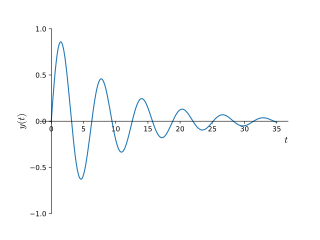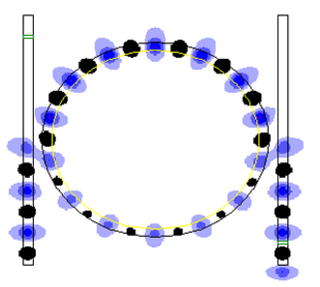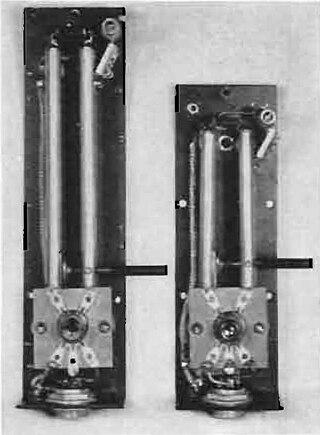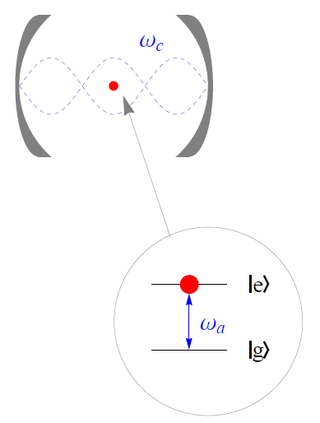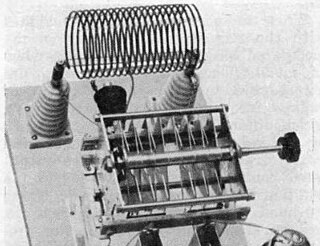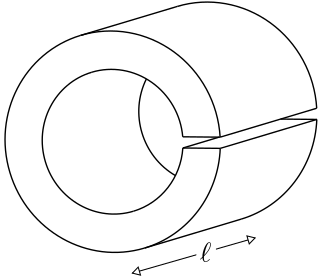Evolution of the term
This term was first introduced in filter theory by M Dishal. [1] [ non-primary source needed ] In some degree it is an analog of coupling coefficient of coupled inductors. Meaning of this term has been improved many times with progress in theory of coupled resonators and filters. Later definitions of the coupling coefficient are generalizations or refinements of preceding definitions.
Coupling coefficient considered as a positive constant
Earlier well-known definitions of the coupling coefficient of resonators are given in monograph by G. Matthaei et al. [2] Note that these definitions are approximate because they were formulated in the assumption that the coupling between resonators is sufficiently small. The coupling coefficient for the case of two equal resonators is defined by formula
(1)
where are the frequencies of even and odd coupled oscillations of unloaded pair of the resonators and It is obvious that the coupling coefficient defined by formula (2) is a positive constant that characterizes interaction of resonators at the resonant frequency
In case when an appropriate equivalent network having an impedance or admittance inverter loaded at both ports with resonant one-port networks may be matched with the pair of coupled resonators with equal resonant frequencies, the coupling coefficient is defined by the formula
(2)
for series-type resonators and by the formula
(3)
for parallel-type resonators. Here are impedance-inverter and admittance-inverter parameters, are reactance slope parameters of the first and the second resonant series-type networks at resonant frequency and are the susceptance slope parameters of the first and the second resonant parallel-type networks.
When the resonators are resonant LC-circuits the coupling coefficient in accordance with (2) and (3) takes the value
(4)
for the circuits with inductive coupling and the value
(5)
for the circuits with capacitive coupling. Here are the inductance and the capacitance of the first circuit, are the inductance and the capacitance of the second circuit, and are mutual inductance and mutual capacitance. Formulas (4) and (5) are known for a long time in theory of electrical networks. They represent values of inductive and capacitive coupling coefficients of the coupled resonant LC-circuits.
Coupling coefficient considered as a constant having a sign
Refinement of the approximate formula (1) was fulfilled in. [3] Exact formula has a form
(6)
Formulae (4) and (5) were used while deriving this expression. Now formula (6) is universally recognized. It is given in highly cited monograph by J-S. Hong. [4] It is seen that the coupling coefficient has a negative value if
In accordance with new definition (6), the value of the inductive coupling coefficient of resonant LC-circuits is expressed by formula (4) as before. It has a positive value when and a negative value when
Whereas the value of the capacitive coupling coefficient of resonant LC-circuits is always negative. In accordance with (6), the formula (5) for the capacitive coupling coefficient of resonant circuits takes a different form
(7)
Coupling between electromagnetic resonators may be realized both by magnetic or electric field. Coupling by magnetic field is characterized by the inductive coupling coefficient and coupling by electric field is characterized by the capacitive coupling coefficient Usually absolute values of and monotonically decay when the distance between the resonators increases. Their decay rates may be different. However absolute value of their sum may both decay all over distance range and grow over some distance range. [5]
Summation of the inductive and capacitive coupling coefficients is performed by formula [3]
(8)
This formula is derived from the definition (6) and formulas (4) and (7).
Note that the sign of the coupling coefficient itself is of no importance. Frequency response of the filter will not change if signs of all the coupling coefficients would be simultaneously alternated. However, the sign is important during collation of two coupling coefficients and especially during summation of inductive and capacitive coupling coefficients.
Coupling coefficient considered as a function of the forced oscillation frequency
Two coupled resonators may interact not only at the resonant frequencies. That is supported by ability to transfer energy of forced oscillations from one resonator to the other resonator. Therefore it would be more accurate to characterize interaction of resonators by a continuous function of forced-oscillation frequency rather than set of constants where is order number of the resonance.
It is obvious that the function must meet the condition
(9)
Besides, the function must become zero at those frequencies where transmission of high frequency power from one resonator to another one is absent, i.e. must meet the second condition
(10)
The transmission zero arises in particularly in resonant circuits with mixed inductive-capacitive coupling when Its frequency is expressed by formula [6]
.(11)
The definition of the function that generalizes formula (6) and meets the conditions (9) and (10) was stated on energy-based approach in. [6] This function is expressed by formula (8) through frequency-dependent inductive and capacitive coupling coefficients and defined by formulas
(12)
(13)
Here denotes energy of high frequency electromagnetic field stored by both resonators. Bar over denotes static component of high frequency energy, and dot denotes amplitude of oscillating component of high frequency energy. Subscript denotes magnetic part of high frequency energy, and subscript denotes electric part of high frequency energy. Subscripts 11, 12 and 22 denote parts of stored energy that are proportional to and where is complex amplitude of high frequency voltage at the first resonator port and is complex amplitude of voltage at the second resonator port.
Explicit functions of the frequency-dependent inductive and capacitive couplings for pair of coupled resonant circuits obtained from (12) and (13) have forms [6] (14)
(15)
where are resonant frequencies of the first and the second circuit disturbed by couplings. It is seen that values of these functions at coincide with constants and defined by formulas (14) and (15). Besides, function computed by formulae (8), (14) and (15) becomes zero at defined by formula (11).





























































































